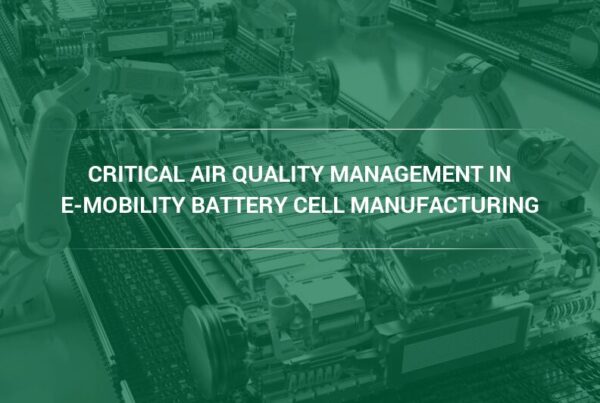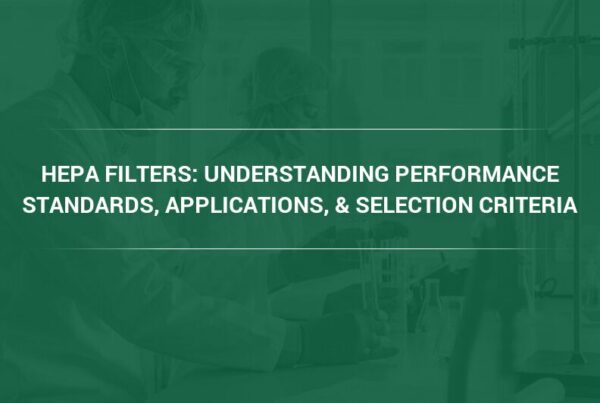Your AI-powered databases are consuming 21% more energy and failing faster than ever—not because of software bugs or hardware defects, but because of contaminated air silently destroying your infrastructure. While IT teams focus on optimizing algorithms, airborne particles are clogging cooling systems, causing thermal throttling, and creating cybersecurity vulnerabilities that could cost millions. Camfil’s advanced filtration technology reduces data center energy consumption by up to 20% while extending hardware life by 2-3 times, protecting your database investments and ensuring peak performance. Discover how Fortune 500 companies are solving this hidden crisis below.
The future of database management is rapidly evolving. From machine learning-enhanced query optimization to in-memory processing systems, modern databases are becoming increasingly sophisticated and powerful. But as these systems grow smarter and more demanding, there’s a critical infrastructure element that often gets overlooked: the air they breathe.
The Database Revolution is Here
Recent breakthroughs in database technology are reshaping how organizations handle data. Carnegie Mellon University’s Andy Pavlo, a leading database researcher, recently highlighted revolutionary developments such as SuRF (Succinct Range Filter)—a breakthrough that enables databases to perform complex range queries with just 12 bits per key while maintaining lightning-fast performance comparable to Bloom filters.[^1]
But perhaps more significantly, the industry is witnessing two major architectural shifts:
- Machine Learning Integration: Databases are incorporating AI to optimize everything from query planning to index structures, with researchers exploring ways to learn new policies based on observed workload rather than relying on hardcoded rules.[^1]
- Cloud-Native Architectures: The rise of shared-disk distributed systems that use distributed storage layers like HDFS or Amazon EBS/S3 is fundamentally changing how data centers operate,[^1] with increased processing demands and heat generation.
These advances represent a quantum leap in database capability – but they come with a hidden cost that’s straining data center infrastructure.
The Invisible Threat to Database Performance
While database engineers focus on optimizing algorithms and query performance, a silent enemy is undermining their efforts: poor indoor air quality.
Modern database systems, especially those enhanced with machine learning capabilities, require unprecedented computational resources. AI models, especially large language models (LLMs), require enormous computational power—training a single LLM comparable to GPT-3 consumes approximately 10 gigawatt-hours (GWh), equivalent to the annual electricity consumption of over 1,000 American households.[^2]
The International Energy Agency (IEA) reported that data centers consumed about 1% of the world’s total electricity in 2020, but researchers from MIT’s Sloan School of Management estimate that by 2030, data centers could account for up to 21% of global energy demand with the current rate of AI growth.[^2] But cooling alone isn’t enough—the quality of air circulating through these systems is equally critical.
Consider what happens when airborne contaminants infiltrate your high-performance database servers:
The Performance Penalty
- Thermal Throttling: Dust accumulation forces CPUs to reduce clock speeds to prevent overheating, directly impacting database query performance.
- Memory Errors: Overheating can cause RAM instability, leading to corrupted data and system crashes during critical database operations.
- Storage Failures: Heat-stressed solid state drives (SSDs) and hard disk drive (HDDs) fail prematurely, threatening data integrity and requiring expensive emergency recovery procedures.
The Hidden Costs
Research from MIT shows that AI-enhanced databases are pushing data centers toward consuming up to 21% of global energy demand by 2030.[^2] Poor air quality compounds this problem by:
- Forcing cooling systems to work 30-40% harder when heat exchangers are clogged with contaminants[^2]
- Requiring frequent hardware replacements due to corrosion and thermal damage
- Creating unplanned downtime that can cost enterprises $5,600 per minute
The Cybersecurity Connection
Here’s where the stakes get even higher. Poor air quality doesn’t just impact performance and costs—it creates cybersecurity vulnerabilities.
When contaminated air causes unexpected hardware malfunctions, it can trigger emergency shutdowns that disrupt critical security monitoring systems. Cybersecurity experts from VentureBeat warn that modern attackers are increasingly “weaponizing heat” by targeting cooling systems to cause outages that expose networks to data exfiltration, with attackers aiming to “exfiltrate billions of dollars in data from data centers by attacking cooling systems.”[^2]
For organizations running AI-enhanced databases containing sensitive information, maintaining stable operating conditions isn’t just about performance— it’s about protecting billions of dollars in digital assets and the organization’s professional reputation.
The Smart Solution: Engineering Clean Air for Smart Databases
The database revolution demands a new approach to data center infrastructure – one that recognizes air quality as a critical performance factor, not just a maintenance concern.
What Modern Database Infrastructure Requires
Ultra-Low Pressure Drop Filtration: As databases become more computationally intensive, cooling systems need maximum airflow efficiency. High-resistance filters that seemed adequate for legacy systems now create unacceptable energy penalties.
Extended Filter Life: With 24/7 database operations, maintenance windows are precious. Filtration systems must deliver consistent performance for months, not weeks, between service intervals.
Molecular-Level Protection: Modern database servers contain increasingly sensitive components that require protection from both particulate matter and gaseous contaminants that can cause corrosion.
The Camfil Advantage for Database-Driven Organizations
Camfil’s advanced filtration technology addresses these challenges with solutions specifically engineered for high-performance computing environments:
- Energy-Optimized Design: Camfil air filters maintain superior air quality while minimizing pressure drop, reducing cooling system energy consumption by up to 20%
- Extended Service Life: Advanced media technology provides consistent protection for 2-3x longer than conventional filters, minimizing disruption to critical database operations
- Comprehensive Protection: From molecular filtration to particulate removal, our solutions protect every component of your database infrastructure
Future-Proofing Your Database Infrastructure
As databases continue to evolve – incorporating more AI, processing larger datasets, and operating in increasingly distributed architectures – the infrastructure supporting them must evolve too. As Pavlo notes, future database management systems will need to handle data that “was never static, clean, or well-structured” and will require new approaches to manage diverse data formats and cloud-native architectures.[^1]
The organizations that will thrive in the age of intelligent databases are those that recognize the interconnected nature of all infrastructure systems. Your database’s ability to leverage machine learning for query optimization depends on stable hardware. Your hardware’s stability depends on effective cooling. And your cooling system’s efficiency depends on clean air.
Taking Action: Building Resilient Database Infrastructure
The future belongs to organizations that take a holistic approach to database infrastructure. This means:
- Evaluate Current Air Quality: Assess whether your existing air filtration can handle the increased demands of modern database systems
- Calculate Total Cost of Ownership: Factor in energy costs, hardware longevity, and downtime risks when making air filtration decisions
- Plan for Growth: Ensure your air quality infrastructure can scale with your database performance requirements
The Bottom Line
The next generation of database technology promises unprecedented capabilities, from self-tuning query optimizers to real-time AI-powered analytics. But realizing this potential requires infrastructure that can support it.
In the race to build smarter databases, don’t let poor air quality hold you back. The most sophisticated algorithm in the world can’t overcome the limitations of overheated, contaminated hardware.
Your databases are getting smarter. Make sure the air they breathe is too.
Ready to optimize your database infrastructure? Contact Camfil to learn how our advanced air filtration solutions can enhance the performance, reliability, and efficiency of your data center operations. Because when it comes to database performance, every detail matters, including the air.
For over 60 years, Camfil has been the trusted partner for organizations that demand clean air solutions. Let us help you build the infrastructure foundation your intelligent databases deserve.
Sources
[^1]: Pavlo, A. (2018). The Future of Database Management: An Interview with CMU’s Andy Pavlo. Two Sigma. Retrieved from https://www.twosigma.com/articles/the-future-of-database-management-an-interview-with-cmus-andy-pavlo/
[^2]: Camfil USA. (2025, April 30). The Growing Need for Better Air Filtration in Data Centers Amid the AI Boom. Clean Air Blog. Retrieved from https://cleanair.camfil.us/2025/04/30/the-growing-need-for-better-air-filtration-in-data-centers-amid-the-ai-boom/



